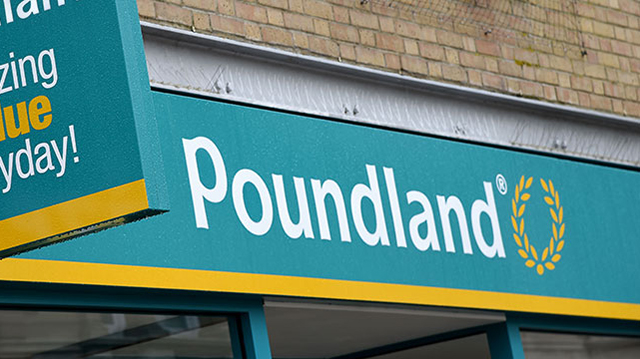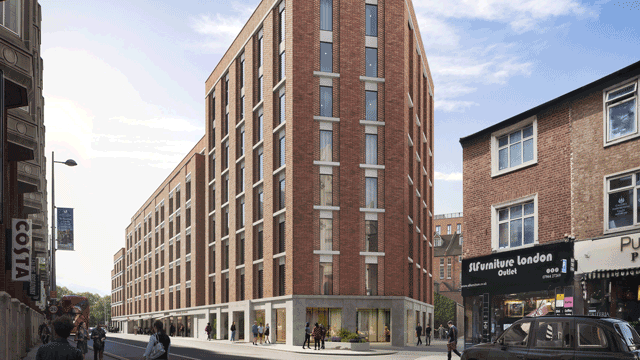by Peter Rice
Following an absence of some years, speculative new-build office development has at last returned to the Liverpool area. The reason for the long interval can easily be established when one considers that a ground-floor suite in one of the last new developments (2 Moorfields) let at £5.75 per sq ft in January 1986.
The low viability of new-build schemes led to development becoming confined to the refurbishment sector, a consequence of which was that during 1988 and 1989 many office blocks were sold to purchasers contemplating refurbishment. The level of disposals has reduced considerably during the past 12 months, although a number of transactions have taken place. While the general economic climate has obviously had its effect, the most likely reason is the amount of potential refurbished space for release on to the market.
Although sales of office blocks have declined, a number did take place during the early part of 1990, with things becoming noticeably quieter during the latter part of the year. The Carroll Group, following its earlier purchase and successful refurbishment of India Buildings, completed the acquisition of Martins Building, Water Street, from Barclays Bank. The sale was conducted in a two-stage tender system with Barclays leasing back a significant portion of the 134,000-sq ft building. The Carroll Group has yet to make public any major proposals for the building.
Auction results could also be interpreted as a reflection of both the type of demand and the changes that have taken place in the market, and it is worth looking at The Albany complex for guidance. April 1990 saw three auction sales to the rear of The Albany in Old Hall Street — Berey’s, Lombard and Windsor Buildings — ranging in size from a little over 10,000 sq ft to just under 25,000 sq ft. The Albany itself was then offered at auction in September but failed to reach the reserve: by comparison, it totals 133,000 sq ft of mainly vacant space and is not only listed but also of a layout and design requiring very imaginative handling to produce the type of space currently most in demand.
Looking further back, Derby House, Exchange Buildings, comprising some 394,000 sq ft, sold at auction in February 1989 for £4.75m, and still remains largely vacant without any public announcement as to its future.
Other buildings sold during the late 1980s, however, are now coming back to the market following refurbishment. Union House, after changing hands a number of times, has now been fully refurbished by Ipis Developments and is available at a rent of £10 per sq ft.
Looking now at general rental levels, these have shown good growth, hence the return of newbuild developments. The Carroll Group showed the way in this direction with a letting, some time ago now, of the Regency Suite in India Buildings at £10 per sq ft. The Prudential carried out a refurbishment of Cunard Building (The Customs House) and this resulted in a recent letting to the Property Services Agency at £8.50 per sq ft. By comparison, a letting in December 1987 showed only £3.35 per sq ft, although lease renewals in the building are showing similar growth to open market deals.
It is important to appreciate, however, that the strongest demand has been for good quality accommodation and in larger units by Liverpool standards. The smaller, older type suites are still proving difficult to let despite rents of £5 per sq ft and less.
The recent shortage of good quality space has resulted in applicants being prepared to look outside the traditional office centre of Liverpool, which, historically, had been very compact within a few hundred yards radius of Castle Street. The problems experienced in the initial letting of, and the subsequent low rentals for, Concourse House, despite its location adjacent to Lime Street Station, are a prime illustration of this. Viewed in this context, Armour House on the south side of Lord Street was very much a fringe building before P & O Properties carried out a major refurbishment and renamed it Chevasse Court. The accommodation at Chevasse Court, both as regards size and quality, proved to be of the type in demand by the market, resulting in a 12,000 sq ft letting to Barclays Bank at £8 per sq ft; 8,000 sq ft to the Home Office; and lettings on another 10,000 sq ft to be finalised shortly.
Turning now to the new-build situation, as stated earlier, much of the inspiration has come from Carroll Group’s success at India Buildings. Many of the active developers have local connections, with one of the leaders being the Hynd Group which, through its subsidiary Neptune Developments, has started schemes at Columbus Quay and Rumford Court, and has also purchased the former Liverpool Echo building in Victoria Street which has potential for some 80,000 sq ft of space.
The new-build schemes comprise a variety of both city-centre and edge-of-town developments, with Columbus Quay the first of the riverside schemes, sited on the car park of the former 1984 International Garden Festival, which in turn was reclaimed from the old South Docks by the Merseyside Development Corporation. The first phase of Columbus Quay — 41,300 sq ft — is nearing completion and a letting has been agreed to a multi-national insurance company at a rent of around £9 per sq ft. The total development, which will comprise over 150,000 sq ft together with restaurant facilities, has been designed by David Backhouse who was also responsible for the shopping centre at Cavern Walks.
Another major development for the riverside follows the announcement by Christopher Pattern of the relocation of the Customs and Excise Office from Southend. The development at Queens Dock will total some 200,000 sq ft and provide in the region of 1,400 jobs. The Merseyside Development Corporation has once again been responsible for the assembly of the site and infrastructure works.
Number One Moorfields, on the corner of Dale Street, has already achieved a record for Liverpool city centre with a pre-let of 26,000 sq ft at £12.50 per sq ft to Barclays Bank for its regional headquarters for international services. A further 19,400 sq ft with car parking will be available in the spring.
Rumford Court, another Neptune Development, is in practical terms a rebuild of a listed Georgian property once used as the Confederate Embassy during the American Civil War. Individual buildings will be available in early 1991 for sale freehold at slightly over £100 per sq ft.
A similar development is being undertaken by the Anglican Chapter joining the cathedral, comprising 10 self-contained office buildings for sale on 125-year leases, which will be ready in the summer. St James Securities of Leeds have a proposed scheme at Great Howard Street which will provide 62,000 sq ft in five detached buildings. Villagate have a refurbishment and new-build scheme under way in Dale Street which will also be available this year and provides 73,000 sq ft.
Away from the centre, Montrose Developments have a scheme at Edge Lane near the Wavertree Technology Park, designed for the corporate occupant, and, while building has commenced, details of the first disposals are still awaited. English Estates have carried out further development at the Technology Park and have achieved a rental of £7.50 per sq ft, although it is understood that this is based on gross internal measurements for B1 use.
Neptune are preparing plans for the former Liverpool Echo building in Victoria Street, which will produce 80,000 sq ft of new-build-standard space. Although within the city centre, it is outside the traditional core, but will have car parking and immediate access to both Mersey tunnels.
Looking to the future, the indications are of a two-tier market arising with a surplus of older mediocre space and a possible lack of large units in new good-quality accommodation. A significant proportion of the current take-up is by government bodies. For those relocating from the South, the highest Liverpool rent so far achieved is £12.50 which means a considerable saving, even when leasing top-quality space. However, with rents in Manchester now at £20-plus for prelets, the Liverpool market may well need a further substantial increase in rents to attract developers from outside the region. The availability of city grants is likely to be an important consideration in the viability of a number of schemes.
The intervening period may see a return to an emphasis on refurbishment, with the danger being that, owing to the limitations of older buildings, the accommodation provided will be of the wrong size and layout. The important point, however, is that new development is under way once more, a rent of £12.50 has been achieved and, with the continued emphasis on demand being for top-quality space, a rent of £15 now seems attainable. However, this is unlikely to be reached before the end of 1991, except in the case of a prelet to a tenant unable to find the right type of accommodation from the existing stock.










